Browse in the Library:
| Artist or Composer / Score name | Cover | List of Contents |
|---|---|---|
| ABRSM Piano Exam 2023-24 Grade 3 C3 THE ENTERTAINER – SCOTT JOPLIN |
 |
|
| ABRSM Piano Exam 2023-24 In The Groove by Mike Cornick |
 |
|
| ABRSM Piano Exam 2023-24 Indigo Moon by Elissa Milne |
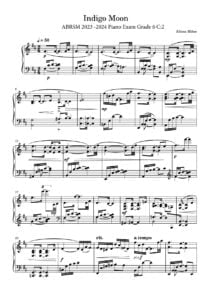 |
|
| ABRSM Piano Exam 2023-24 Jester’s Jig by Chee-Hwa Tan |
 |
|
| ABRSM Piano Exam 2023-24 Love Theme by Catherine Rollin |
 |
|
| ABRSM Piano Exam 2023-24 Minuet In G (Anonymous) |
 |
|
| ABRSM Piano Exam 2023-24 The Song Of Twilight by Yoshinao Nakada |
 |
|
| ABRSM Piano Exam Pieces Grade 1 2013 & 2014 syllabus |
 |
ABRSM Piano Exam Pieces Grade 1 2013 & 2014 syllabus |
| ABRSM Piano Exam Pieces Grade 1 2023 2024 |
 |
ABRSM Piano Exam Pieces Grade 1 2023 2024 |
| ABRSM Piano Exam Pieces Grade 1 2025 2026 |
 |
ABRSM Piano Exam Pieces Grade 1 2025 2026 |
| ABRSM Piano Exam Pieces Grade 2 2023 2024 |
 |
ABRSM Piano Exam Pieces Grade 2 2023 2024 |
| ABRSM Piano Exam Pieces Grade 3 2013 2014 |
 |
|
| ABRSM Piano Exam Pieces Grade 3 2023 2024 |
 |
ABRSM Piano Exam Pieces Grade 3 2023 2024 |
| ABRSM Piano Exam Pieces Grade 3 2025 2026 |
 |
ABRSM Piano Exam Pieces Grade 3 2025 2026 |
| ABRSM Piano Exam Pieces Grade 4 2021 2022 |
 |
ABRSM Piano Exam Pieces Grade 4 2021 2022 |
| ABRSM Piano Exam Pieces Grade 4 2023 2024 |
 |
|
| ABRSM Piano Exam Pieces Grade 5 2023 2024 |
 |
ABRSM Piano Exam Pieces Grade 5 2023 2024 |
| ABRSM Piano Exam Pieces Grade 6 2023 2024 |
 |
ABRSM Piano Exam Pieces Grade 6 2023 2024 |
| ABRSM Piano Exam Pieces Grade 7 2023 2024 |
 |
ABRSM Piano Exam Pieces Grade 7 2023 2024 |
| ABRSM Piano Exam Pieces Grade 8 2023 2024 |
 |
ABRSM Piano Exam Pieces Grade 8 2023 2024 |
| ABRSM Piano Exam Pieces Grade 8 2025 2026 |
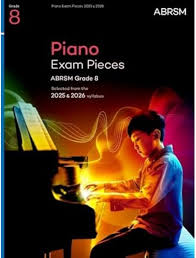 |
ABRSM Piano Exam Pieces Grade 8 2025 2026 |
| ABRSM Piano Mix 3 for Easy Piano Grades 3-4 |
 |
ABRSM Piano Mix 3 for Easy Piano Grades 3-4 |
| ABRSM Piano Prep Test |
 |
|
| ABRSM Piano Scales And Arpeggios from 2021 Guide For Practical Grades |
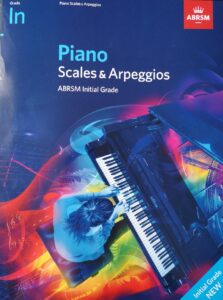 |
|
| ABRSM Selected Piano Exam 2011 2012 Grade 1 |
 |
|
| ABRSM Selected Piano Exam Grade 2 (2011 2012 ) |
 |
|
| ABRSM Specimen Aural Tests Grade 1 to 3 |
 |
|
| ABRSM Specimen Aural Tests Grade 4 & 5 |
 |
|
| ABRSM Teaching notes on piano exam pieces (2013 & 2014) |
 |
|
| ABRSM The Manual Of Scales Broken Chords And Arpeggios For Piano |
 |
|
| ABRSM Theory of Music Exams Grade 8 (The Associated Board of Royal Schools of Music) 2010 |
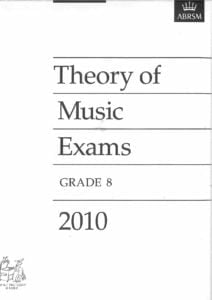 |
|
| AC/DC – Classic – Early Years – High Voltage And Let There Be Rock (Guitar Tab Songbook) |
 |
ACDC – Classic – Early Years – High Voltage And Let There Be Rock |
| AC/DC – Jam With AC/DC (PDF with MP3 audio tracks Guitar Tab Songbook) |
 |
Jam With ACDC |
| AC/DC Rock Score |
 |
|
| AC/DC, Best of (Guitar & Tablature) |
 |
Best Of ACDC (Guitar) |
| Ace Of Base – Beautiful Life | ||
| Ace Of Base – Dont Turn Around | ||
| Ace Of Base – Living In Danger | ||
| Acoustic 33 TOP Guitar Hits (Guitar Songbook) with Tablature – sheet music |
 |
Acoustic 33 TOP Guitar Hits (Guitar Songbook) – sheet music |
| Acoustic Blues Guitar By Kenny Sultan Guitar Tab |
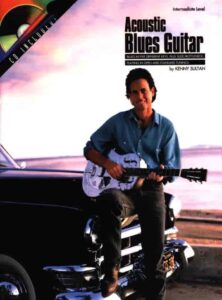 |
Acoustic Blues Guitar |
| Acoustic Blues Guitar Keith Wyatt with TABs |
 |
Acoustic Blues Guitar Keith Wyatt with TABs |
| Acoustic Blues Guitar Styles (Larry Sandberg) (with Tablature) |
 |
Acoustic Blues Guitar Styles (Larry Sandberg) |
| Acoustic Classics 42 songs Piano Vocal Guitar |
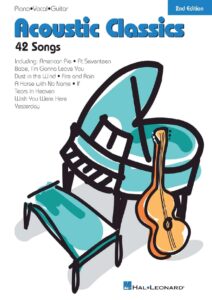 |
Acoustic Classics 42 songs Piano Vocal Guitar |
| Acoustic Guitar Bible (35 great songs) Guitar with TABs |
 |
Acoustic Guitar Bible (35 great songs) Guitar with TABs |
| Acoustic Rock (Guitar) Rolling Stones, Green Day, Pink Floyd, Bob Dylan (Songbook Guitar Tab) with Tablature |
 |
|
| Acoustic Rock 90’s, Best of – Guitar with Tablature |
 |
Acoustic Rock 90’s, Best of – Guitar |
| Acqua azzurra acqua chiara (Battisti) | ||
| Ad Te Levavi (Musescore File).mscz | ||
| Adagio (Lara Fabian) | ||
| Adagio MP3.zip | ||
| Adah’s Theme (La femme avec les yeux lumineux) Sex and the City |
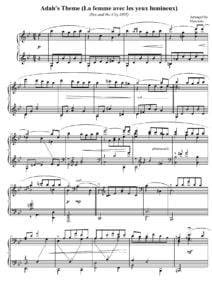 |
|
| Adah’s Theme (Le femme avec les yeux lumineux) Sex and the Cit | ||
| Adam – Adolphe Charles Holy Night Cantique-Nöel |
 |
|
| Adam – Cantique de Nöel Minuit Chretiens | Adam – Cantique de Noel Minuit Chretiens VS | |
| Adam – Derniers souvenirs d’un musicien |
 |
|
| Adam – O Holy Night | Adam – O Holy Night | |
| Adam – Souvenirs d’un musicien |
 |
|
| Adam (Cappeau) – Cantique de Noël. Easy Piano with voice or instrument (Paroles and lyrics) |
 |
Adam-Cappeau-Cantique-de-Noel- |
| Adam (Cappeau) – Cantique de Noel. Easy Piano with voice or instrument.mscz | ||
| Adam Cantique de Nöel Christmas song | Adam Cantique de noel | |
| Adam Carse – The History Of Orchestration Adam Carse |
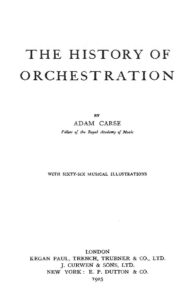 |
|
| Addams Family Theme (Musescore File).mscz | ||
| Addams Family Theme (Easy Piano) |
 |
|
| Addio Colonnello (Ennio Morricone) | ||
| Adele Songs from the Album 21 For SATB, SSA and Piano |
 |
Adele Songs from the Album 21 |
| Adele – 21 |
 |
ADELE 21 SONGBOOK |
| Adele – Chasing Pavements Piano Vocal guitar chords |
 |
|
| Adele – Easy on me (Piano solo with lyrics) |
 |
|
| Adele – Rolling in the Deep |
 |
|
| Adele – Rumor Has It |
 |
|
| Adele – Set Fire to the Rain |
 |
|
| Adele – Set Fire To The Rain (2) (Musescore File).mscz | ||
| Adele – Someone Like You | Adele – Someone Like You | |
| Adele – Someone Like You easy piano |
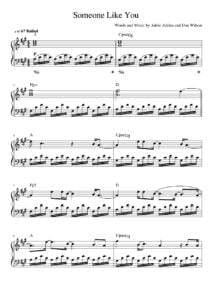 |
|
| Adele – The Best Of SongBook (12 songs arranged for easy piano) |
 |
Adele – The Best Of SongBook (12 songs arranged for easy piano) |
| Adele 19 [Piano, Guitar, Vocals] |
 |
Adele 19 [Piano, Guitar, Vocals] |
| Adele 25 Songbook |
 |
Adele 25 Songbook Contents —  |
| Adele Best Of Adele Big Note Piano (Adele Adkins) |
 |
Adele Best Of Adele Big Note Piano (Adele Adkins) |
| Adele Easy On Me Sheet Music |
 |
|
| Adele Original Keys For Singers (Adele) |
 |
Adele Original Keys For Singers (Adele) |
| Adele Skyfall (Piano Vocal Guitar Chords) | Adele Skyfall (Piano Vocal Guitar Chords) | |
| Adios Amor – Goodbye My Love as recorded by José Feliciano |
 |
|
| Adult All In One Course Level 1 With Audio Mp3 (Willard Palmer) |
 |
Lessons Alfred’s Basic Adult Piano Course Level 1 |
| Adult All In One Course Level 2 With Audio Mp3 (Willard Palmer) |
 |
Willard Palmer – Adult All-In-One Course Level 2 |
| Adult Greatest Movie Hits Piano Level 1 |
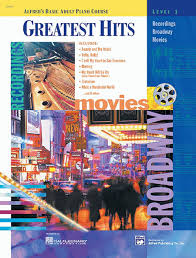 |
Adult Greatest Movie Hits Piano Level 1 |
| Adult Piano Adventures ALL-IN-ONE PIANO COURSE 1 |
 |
|
| Adult Piano Adventures All-In-One Piano Course Book 2 Book With Media Online (Nancy Faber, Randall Faber) Sheet Music |
 |
|
| Adult Piano Adventures Christmas – Book 1 (Nancy Faber Randall Faber) |
 |
|
| Adult Piano Adventures Christmas – Book 2 |
 |
Adult Piano Adventures Christmas – Book 2 |
| Adult Piano Adventures Popular Book 1 – Timeless Hits and Popular Favorites (Adult Piano Adventures Popular) |
 |
Adult Piano Adventures Popular Book 1 – Timeless Hits and Popular Favorites (Adult Piano Adventures Popular) |
| Adult Piano Course Greatest Movie Hits Piano Level 1 Recordings Broadway Movies |
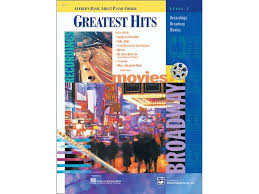 |
Adult Piano Course Greatest Movie Hits Piano Level 1 Recordings Broadway Movies |
| Advanced Harmonic Concepts by Wayne Naus (with audio MP3) |
 |
Advanced Harmonic Concepts by Wayne Naus |
| Advanced Harmonic Exercises For Jazz Piano |
 |
advanced harmonic exercises |
| Advanced Piano Solos 1 Encyclopedia by Tom Roed |
 |
Advanced Piano Solos 1 Encyclopedia by Tom Roed |
| Advanced Piano Solos 2 Complete by Tom Roed |
 |
Advanced Piano Solos 2 Complete by Tom Roed |
| Advanced Sacred Music Piano Solos by John Kraus |
 |
|
| Advanced Scale Concepts and Licks for Guitar (PDF + MP3 audio tracks Play Along) with Tablature |
 |
 |
| Aebersold – 110 – When I fall In Love – Romantic Ballads pdf with embedded audio MP3 Tracks |
 |
Jazz Play Along Vol 110 [When i Fall in Love] |
| Aebersold – 113 Embraceable You – Vocal Standards with audio MP3 Tracks |
 |
Jamey Aebersold – Vol 113 |
| Aebersold – 30 blues scale By Jamey Aebersold | Aebersold – 30 blues scale By Jamey Aebersold | |
| Aebersold – A New Approach To Jazz Improvisation Gettin’it together vol. 21 |
 |
aebersold gettin all together vol 21 |
| Aebersold – Practice Procedures For Memorizing Scales And Chords | Aebersold – Practice Procedures For Memorizing Scales And Chords | |
| Aebersold – Rapid Reference Vol 1-114 | Aebersold – Rapid Reference Vol 1-114 | |
| Aebersold – Vol 01 – How to Play and Improvise Jazz (with audio MP3) |
 |
Aebersold – Vol 01 – How to Play and Improvise Jazz |
| Aebersold – Vol 03 – The II-V7-I Progression Jazz Play Along Book + Audio Mp3 |
 |
|
| Aebersold – Vol 105 – Dave Brubeck Jazz Play Along Book + Audio Mp3 |
 |
|
| Aebersold – Vol 118 – [Groovin Jazz] (with audio MP3) |
 |
|
| Aebersold – Vol 32 – Ballads Jazz Play Along Book + Audio Mp3 |
 |
|
| Aebersold – Vol 34 – Jam Session Jazz Play Along Book + Audio Mp3 |
 |
Includes MP3 Play along themes as Blue moon, The shadow of your smile, Over the rainbow, etc. |
| Aebersold – Vol 45 – [Bill Evans] Jazz Play Along Book + Audio Mp3 |
 |
Aebersold – Vol 45 – [Bill Evans] |
| Aebersold – Vol 58 – Unforgettable Standards Jazz Play Along Book + Audio Mp3 |
 |
aebersold unforgettable standards sheet music |
| Aebersold – Vol 76 – David Baker – How To Learn Tunes (A Jazz Musician’s Survival Guide) |
 |
how to learn tunes |
| Aebersold 25 How To Practice By Jamey Aebersold | Aebersold 25 | |
| Aebersold Antonio Carlos Jobim Vol 98 – Bossa Nova Songbook Jazz Play Along Book + Audio Mp3 |
 |
Aebersold Antonio Carlos Jobim Vol 98 – Bossa Nova Songbook |
| Aebersold Anyone Can Improvise – 52 Points To Remember | Aebersold Anyone Can Improvise – 52 Points To Remember | |
| Aebersold Jazz EAR training (with audio MP3) |
 |
Aebersold Jazz EAR train |
| Aebersold Jazz Handbook 09 Tips For Learning A New Tune & Practice Procedures For Memorizing |
 |
Aebersold Jazz HANDBOOK |
| Aebersold Jazz Play-Along Books & audio MP3 1st Part Full Collection – Vol 1- 40 (with MP3) for all instruments |
Compressed file  Aebersold Full Collection Part 1 – Vol 1- 40 Aebersold Full Collection Part 1 – Vol 1- 40 |
40 volumes with MP3 Aebersold Book Index Vol.001-106 |
| Aebersold Jazz Play-Along Books & audio MP3 2nd Part Full collection Vol 41- 75 for all instruments | Compressed fileAebersold Full Collection Part 2 – Vol 41- 75.. | 35 volumes with MP3 Aebersold Book Index Vol.001-106 |
| Aebersold Jazz Play-Along Books & audio MP3 3rd Part Full Collection – Vol 76- 112 (with MP3) | Compressed fileAebersold Full Collection Part 3 – Vol 76- 112 | 37 volumes with MP3 Aebersold Book Index Vol.001-106 |

Do you want to learn to play the piano? Benefits of learning Piano
There are unquestionable benefits to playing musical instruments, especially piano. Furthermore, studies show it is truly never too late to start learning piano – the mental and physical benefits apply to all ages.
1. Prevents Brain Processing, Hearing and Memory Loss
The ability to process auditory signals usually slows down as we age. However, participants of a recent study who continued to play music throughout their lives had helped reverse the decline of brain processing, memory and inner ear hearing loss.
Source: ABC News
2. Improved Counting & Math Skills
A study conducted by Martin F. Gardiner and his colleagues at the Center for the Study of Human Development at Brown University found that specialized musical training in specific increments toward greater difficulty boosted second graders’ math skills significantly above their peers.
Source: Brain Connection Education Week
3. Exercising New Language Skills
A study in the early 1990s discovered the “Mozart effect” in children, which showed early language development and spatial-temporal intelligence could be boosted by keyboard lessons for preschoolers.2 Additionally, a study by Dr. Charles Limb showed that pianists who solo use their brains linguistically as if they were responding conversationally and grammatically.
Source: Brain Connection & SciePub & Huffington Post
4. Improves Reading Comprehension
A 1993 study summarized in the Educational Psychology journal showed that the ability to discriminate between pitch, which is a fundamental ability you learn when playing piano, was linked to good reading performance. Additionally, learning to memorize music before performance exercises reading comprehension skills and the portion of your brain responsible for recall.
Source: Brain Connection & Musician Brain
5. Encourages Creativity
Dr. Ana Pinho conducted a recent study on jazz pianists. Monitoring their brain activity while playing, she found that the part of their brain responsible for default or stereotypical responses was actually turned off. Instead, when jazz pianists are playing, their brains improvisation ability is firing to create unique, original sound and style.
6. Practice with Time Management & Organization
As with any responsibility or hobby, learning to add it to your daily routine and make time to do it requires good time management. Playing piano and other instruments that demand a routine practice schedule are particularly effective in challenging one’s ability to manage and organize their time. For children, learning to play piano, juggling lessons, practice and fun play, is a great way to teach these lifelong skills.
Source: Ezine Articles
7. Requires Concentration, Discipline & Patience
Multiple areas of the brain light up when playing music. Scientists studying the brains of musicians as they play music have found that the discipline of playing music is the equivalent of a full-body brain workout. Strengthening multiple areas of the brain, including our ability to concentrate, focus and apply knowledge, playing music allows us to exercise our brain similarly in other areas. So, it should not be surprising that starting to play piano will trigger increased patience, concentration and discipline in other areas of your life.
Source: TED
8. Strengthens Hand Muscles & Hand-Eye Coordination
It is no surprise that learning to play piano requires hand-eye coordination, but a recent study on hand motor control in musicians suggests that piano performers have actually changed the cortical mapping to increase finger speeds. For children and adults with reduced motor skills, learning to play the piano can challenge these brain connections to motor movement and even strengthen coordination.
Source: Music and Health
Source: Mic & NCBI
9. Improves Rhythm & Coordination
Learning rhythm is essential to mastering piano, but it also has been shown to have a positive effect on reading skills in children. According to the academic journal, Psychology of Music, “Children exposed to a multi-year program of music tuition involving training in increasingly complex rhythmic, tonal, and practical skills display superior cognitive performance in reading skills compared with their non-musically trained peers.”
Source: Science Daily
10. Boosts Self-Esteem
In a 2014 study of fourth-grade students in public school in Canada, children who received individual piano lessons for three years tested higher on self-esteem measures and school music achievement tests. Learning to play piano and experiencing the excitement of mastery after learning a piece of music is an incredibly powerful way to boost one’s confidence.
Source: Sage Pub Journals
11. Expands Cultural Knowledge
In a 2016 study of Amazonian women and men, musical preference was found to be strictly cultural and not hardwired into our brains. Counter to past assumptions about our brains’ preferences of dissonant versus consonant chords, the study’s findings support learning to play piano as one way to expand our cultural knowledge of different sounds, styles and types of music. Especially for children, this exposure is critical to encouraging early open mindedness and cultural diversity.
Source: Science Daily
12. Reduces Stress & Anxiety
A 2013 article published by the National Library of Medicine found that piano practice can actually help treat depression and alleviate stress in elderly adults. Despite the studied demographic being older adults, these findings are encouraging of all ages that piano practice can serve as a holistic and natural treatment for depression and mood disorders.
Source: NCBI
13. Provides an “Unplugged” Outlet and Entertainment
Limiting electronics is something many parents and even adults need to be doing more and more. The effect of excessive time spent on electronics is linked to increased brain atrophy, impaired cognitive functioning and even increased cravings due to impaired dopamine functioning. Learning to play piano is an activity for kids and adults alike to move away from “screen time” and have an unplugged outlet for entertainment.
Source: Psychology Today
14. Allows for Kinesthetic and Tactile Learning
In 2013, an institute in Barcelona, Spain, studied the effects of different kinesthetic learning environments and leisure activities. The study found that participants who were assigned piano practice as opposed to others who did sports, painting, etc., showed greater neuro and psychological improvement on the scale they were using.
Source: Science Nutshell
15. Changes Brain Structure and Mental Ability
Many people define themselves as good or not good at music. You’ve heard people say before, “I’m not musical at all!” Gottfried Schlaug, director of the music and neuroimaging lab at Beth Israel Deaconess and Harvard Medical School in Boston, has confirmed through multiple studies that some people’s brains are indeed better suited for learning music. However, all humans can benefit and even change the way their brain processes information and learns new skills by learning to play piano.
Source: The Guardian
If you want to read more about the benefits of learning piano, you can read the post “How playing piano makes you more successful in life.“
Before ever starting to learn to play the piano, most people operate under false assumptions:
- They believe they’re too old to learn how to play a musical instrument;
- They believe they lack musical talent and that they’re not all around musical people;
- They think they have to learn to read music to have any chance of playing an instrument;
- They believe it will take far too much effort and time to overcome these obstacles.
Guess what, after starting to learn a few things, most beginners say they couldn’t have been more wrong regarding their initial concerns.
If your main concern is the lack of musical talent, then you should be relieved because it’s not something you necessarily need.
All you actually need is time and dedication to the cause. Truth is, it’s not as easy as a walk in the park, but if you set aside a few hours and insist on the new skill, you will be able to play some easy songs a lot sooner than you think. After making some progress, chances are high that you’ll share our opinion, that learning to play the piano is one of the most important decisions that you ever made.

Teaching Yourself Piano
Step 1: Owning a piano
Before actually starting some practical exercises you will need something to practice on. It’s not enough to go to a teacher’s place for lessons.
Learning to play a musical instrument takes a lot of practice. It’s just like learning to ride a bike. It takes some time until you get to the point where you develop a connection. You will need to practice further, but up until that point you will have to find a way to work this into your daily routine.
As you may already know, pianos come in 2 versions: acoustic and digital. Acoustic pianos are extraordinary but they have some disadvantages like size, weight, price and maintenance costs. The initial enthusiasm could blind anyone towards some of these disadvantages, but after that initial phase passes, you’ll probably notice yourself that an acoustic piano is not the most convenient option. A great option for acoustic pianos are digital pianos.
Digital pianos don’t have the need to be tuned regularly, are more compact and offer many features that make them one of the most versatile musical instruments. With the development of technology, digital pianos have come to a stage where they can emulate the sound and feel of acoustic grand pianos. And best of all they come at a fraction of the price of an acoustic model.
Digital pianos are hands down the best option you have if you want to learn how to play the piano. You now have 2 further options: used digital pianos or new ones. We generally recommend choosing a new digital piano because used models may have a number of disadvantages that you can easily avoid. Above all, with new digital pianos you get higher value for money, as they could cost less than an older model, and be technologically more advanced.
If you think that a digital piano might be the something that could aid your learning experience, you can read our guide on choosing the best digital piano, or you can browse through our in-depth digital piano reviews.
Step 2: Gaining initial knowledge
- Notes – Pianos have seven notes, which are as follows on a keyboard: C – D – E – F – G – A – B

- Keys – Most piano keyboards have 88 keys. There are models that have less keys, but the 88-key models are generally better for anyone learning to play the piano. There are 2 types of keys: white keys and black keys. White keys are called naturals, because they make natural sound. Black keys are called accidentals, because, you guessed it, when pressed they make flat or sharp sounds. On one octave you have 7 naturals and 5 accidentals.
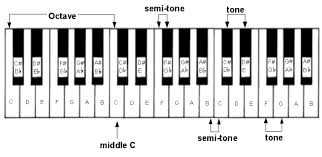
- Chords – A chord is composed of 3 or more musical notes that are harmonic (sound well together) and are heard as sounding simultaneously. The most common chords consist of 3 notes played in tandem, and are called triads. Four of the more basic chord are major, minor, augmented and diminished.

Step 3: Learning to play the piano
- Get the help of a professional. As said before, and we cannot say this enough, teaching yourself piano is one of the most interesting, but also challenging activities that you can start. A piano tutor can make a big difference in your progress. Not everybody is able to learn piano by themselves. And if you feel that you have a hard time getting ahead, maybe a teacher could help a lot. When you get the help of a professional you make sure that you learn properly from the start and that you avoid bad patterns that aren’t easy to unlearn.
- Start a piano course. There’s an abundance of instructional material that you can choose from. You can find many books that teach how to play the piano. A book will take you through the fundamentals: learning to read music, play basic scales, chord progression and simple songs. They’re really affordable, but lack a complete learning experience. What you want to look for is a piano learning program that teaches you everything from A to Z and also contains audio and video material. This way you’re not only going to learn theoretically, but also by seeing how certain passages, key combinations and exercises sound and look like when played in a correct manner.
- You can try to play by ear. You will be able to learn by ear some songs, especially if you have a certain native talent for music. By trial and error and through repetition, you’ll be able to play some songs without ever seeing a sheet or knowing how to read one.

A few useful tips before going ahead
- Give yourself the necessary time to learn and don’t forget to have fun. Rome wasn’t built in a day!
- Using both your hands and feet simultaneously seems to be pretty hard in the beginning, but don’t get too hung up on that thought. Start practicing the lines for each hand separately and when you master both put everything together.
- Avoid using the sustain pedal too much when you’re just beginning to learn. As fun as it might seem, you’re actually going to hear a lot clearer what you’re playing and you’re going to easily spot mistakes right from the start.
- Avoid playing a melody with both hands. Usually, your hands will be playing different lines, so getting used to play with both is not necessarily the most useful of habits.
- The most convenient and efficient way to teach yourself piano is going for an online course. There are many great ones, that contain everything you need to know and are designed so you easily understand every step of the way.
You can find many books and methods in our Sheet Music Library, and also piano technique books, including play-along books with audio tracks to play with a background accompaniment music.

